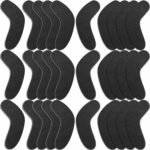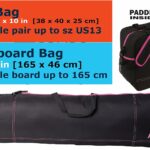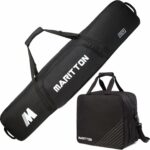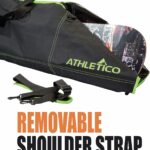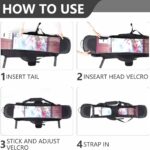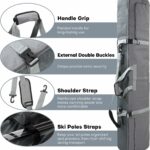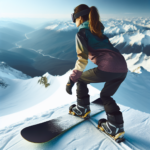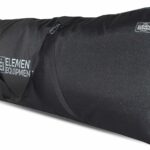If you’re an adrenaline junkie who loves snowboarding, safety should be of paramount importance to you. One crucial piece of safety equipment is the snowboard helmet, but do you know the correct way to wear it? In the article “How To Wear A Snowboard Helmet?”, we’ll properly guide you through the steps of appropriately fitting your snowboard helmet to ensure maximum protection. Believe it or not, there’s more to it than just placing it on your head. Let’s make sure you’re up to speed, ensuring safety while you’re shredding those snowy slopes.
Understanding the Importance of a Snowboard Helmet
When you think about snowboarding gear, a helmet isn’t always the first thing that comes to mind. However, you’ll quickly realize its importance when you encounter rough and unpredictable downhill terrain. Snowboarding is incredible fun, but it also poses some risks, which is why understanding the significance of a helmet is crucial.
Safety benefits of wearing a snowboard helmet
The primary benefit of wearing a snowboard helmet is, undoubtedly, safety. It’s designed to protect your head from impacts and minimise injury in the event of a fall or collision. In some cases, it can genuinely be a lifesaver, protecting you from devastating and life-threatening head injuries. Besides, it keeps you warm during chilly winds and snowfall.
Other benefits of a snowboard helmet
Aside from safety, a snowboard helmet offers several other advantages. It helps you keep warm in cold weather conditions, thanks to its insulation properties. Moreover, many helmets are equipped with features like earmuffs and vents, offering comfort and temperature regulation. Some also have special attachments for your action camera or headphones, making your snowboarding experience more entertaining.
Choosing the Right Snowboard Helmet
Just like snowboarding equipment, helmets come in various shapes and sizes. It’s essential to choose the right one that ensures maximum protection and comfort.
Different types of snowboard helmets
There are primarily two types of snowboard helmets: half shell and full shell. Half shell helmets cover your head but leave your ears and neck exposed, making them ideal for warm weather conditions. On the other hand, full shell helmets provide complete coverage, including your ears and often even part of your face and neck, making them perfect for harsh winter conditions.
Factors to consider when buying a snowboard helmet
When purchasing a helmet, there are a few things that you should consider. Size is an essential factor – it should fit snugly but not too tight. Likewise, check for features like detachable liners and vent systems for comfort and breathability. Furthermore, consider your snowboarding style. If you prefer aggressive, high-speed snowboarding, opt for a robust, full-coverage helmet.
Using online resources for snowboard helmet reviews
Online resources are a fantastic place to find reviews on various snowboard helmets. Reading other people’s experiences can help you understand the pros and cons of a particular model – a helpful tool when deciding what helmet to buy.
Proper Sizing of a Snowboard Helmet
A well-fitted helmet can make a huge difference to your snowboarding experience. Here’s how you can get it right.
How to measure your head for a snowboard helmet
To get the correct helmet size, you need to measure your head. Take a flexible measuring tape, wrap it around the widest part of your head – usually just above the eyebrows and ears.
Reading the size chart of a snowboard helmet
Once you’ve measured your head, compare it with the manufacturer’s size chart. These charts slightly vary from one brand to another, so ensure you check the right chart for the helmet you wish to buy.
Trying on the helmet before buying
Nothing beats trying on the helmet before making the final purchase. It should fit snugly, but it shouldn’t be too tight or uncomfortable. If you feel any pressure points or if it’s too loose, adjust the size or try another model.
Correctly Placing the Helmet on Your Head
Properly placing the helmet on your head is as important as finding the right size.
Proper orientation of the helmet
Ensure the front of the helmet sits just above your eyebrows and the back does not tilt upwards. This way, it covers your head fully and comfortably.
Securing the helmet onto your head
Once the helmet is correctly positioned, secure it using the adjustment wheel or straps at the back. The helmet should now fit firmly on your head without feeling too tight or loose.
Checking for any uncomfortable pressure points
Lastly, check for any uncomfortable pressure points. If you feel any discomfort, try readjusting your helmet or choose a different model.
Adjusting the Inner Padding and Liners
Snowboard helmets include inner padding and liners to enhance comfort and protection. Understanding their functions can help you better adjust them to your needs.
Functions of inner padding and liners
Inner padding and liners provide an additional layer of protection and comfort. They help cushion your head during impacts and provide insulation.
How to adjust paddings and liners for comfort
Most snowboard helmets enable you to adjust or remove parts of the inner padding and liners, allowing you to customise the helmet’s fit to your comfort. Some even allow you to add more padding for a snug fit.
Replacement of worn-out paddings and liners
It’s important to replace the padding and liners regularly as they tend to wear out over time. Fresh padding and liners not only ensure better comfort but also enhance the helmet’s performance by maintaining its protective properties.
Fastening the Chin Strap
Fastening the chin strap correctly is crucial for the helmet’s stability.
Proper positioning of the chin strap
Firstly, ensure the strap is centered under your chin for optimal security and without causing discomfort.
Adjusting the tightness of the chin strap
Once in position, adjust the strap’s tightness so that it feels secure without choking you. It should be snug enough that the helmet doesn’t shift or come off during a fall.
Comfort check after fastening the chin strap
After fastening the chin strap, do a final comfort check. If it feels too tight or loose, readjust to find a balance between safety and comfort.
Eye and Face Protection with Your Helmet
Protecting your eyes and face is another important aspect of snowboarding safety.
Types of visors and goggles compatible with helmets
There is a wide range of visors and goggles available on the market. When choosing, look for ones that fit well with your helmet and give you a wide field of vision. They should also protect against UV rays and have anti-fog properties.
Proper placement of goggles with the helmet
Your goggles should fit comfortably on your face, with the band resting securely over your helmet. Ensure there are no gaps between the goggles and the helmet and that they do not obstruct your view.
Ensuring breathing and vision clarity with face shields
If you use a face shield or mask, make sure it does not obstruct your breathing or vision. Choose ones that are designed for high-altitude conditions and provide adequate venting.
Maintenance and Care for Your Snowboard Helmet
Regular maintenance and care can extend your helmet’s lifespan and keep it in optimal condition.
Cleaning and storing your helmet
After every use, wipe down your helmet with a damp cloth and let it air dry. Store it in a cool, dry place away from direct sunlight or high heat, which can damage the helmet material.
The lifespan of a snowboard helmet
A snowboard helmet’s lifespan varies based on usage and care, but generally, you should replace it every three to five years. Frequent use or major impacts can shorten this timeline.
Signs your snowboard helmet needs replacement
Signs of damage, such as cracks, deteriorating inner padding, or a loose fit, are clear indicators that it’s time to replace your helmet. It’s best to replace your helmet immediately after a significant impact, even if no visible damage is apparent.
Wearing Additional Gear with the Helmet
Snowboarding helmets are designed to be worn with additional protective gear for maximum safety.
Using headwear under the helmet
Many snowboarders like to wear a thin beanie or balaclava under their helmet for extra warmth. Make sure the headwear is thin enough not to affect the helmet’s fit.
Wearing headphones with the helmet
Listening to music while snowboarding can add to the fun. Several helmets come with built-in headphone pockets. If not, small, thin wireless headphones should fit comfortably under the helmet.
Options for action camera attachments
For those who love documenting their rides, some helmets come with a mount for your action camera. If your helmet does not have this feature, there are plenty of aftermarket mounts available.
Safety Tips While Using a Snowboard Helmet
Even with a helmet, it’s important to be cautious while snowboarding.
Understanding terrain and snow condition impacts
Familiarising yourself with the terrain and understanding how different snow conditions affect your ride can go a long way in preventing falls and crashes.
Remember, your helmet is not foolproof. Always snowboard within your ability limit, and avoid reckless behaviour that may increase the risk of accidents.
Knowledge of helmet usage rules in snowboarding zones
Lastly, ensure you are well-versed with the safety rules and guidelines in the snowboarding zone you choose to ride in. Some places require mandatory helmet use, while others leave it to individual discretion.
To sum up, wearing a snowboard helmet is a no-brainer. Your safety is crucial, and a helmet is a significant part of it. So, make sure you equip yourself with a properly fitted and well-maintained helmet every time you hit the snow. Enjoy the ride and stay safe!
- What Snowboard Bindings Should I Get? - January 23, 2024
- What Size Screws For Snowboard Bindings? - January 23, 2024
- How To Snowmobile On Water? - January 23, 2024

